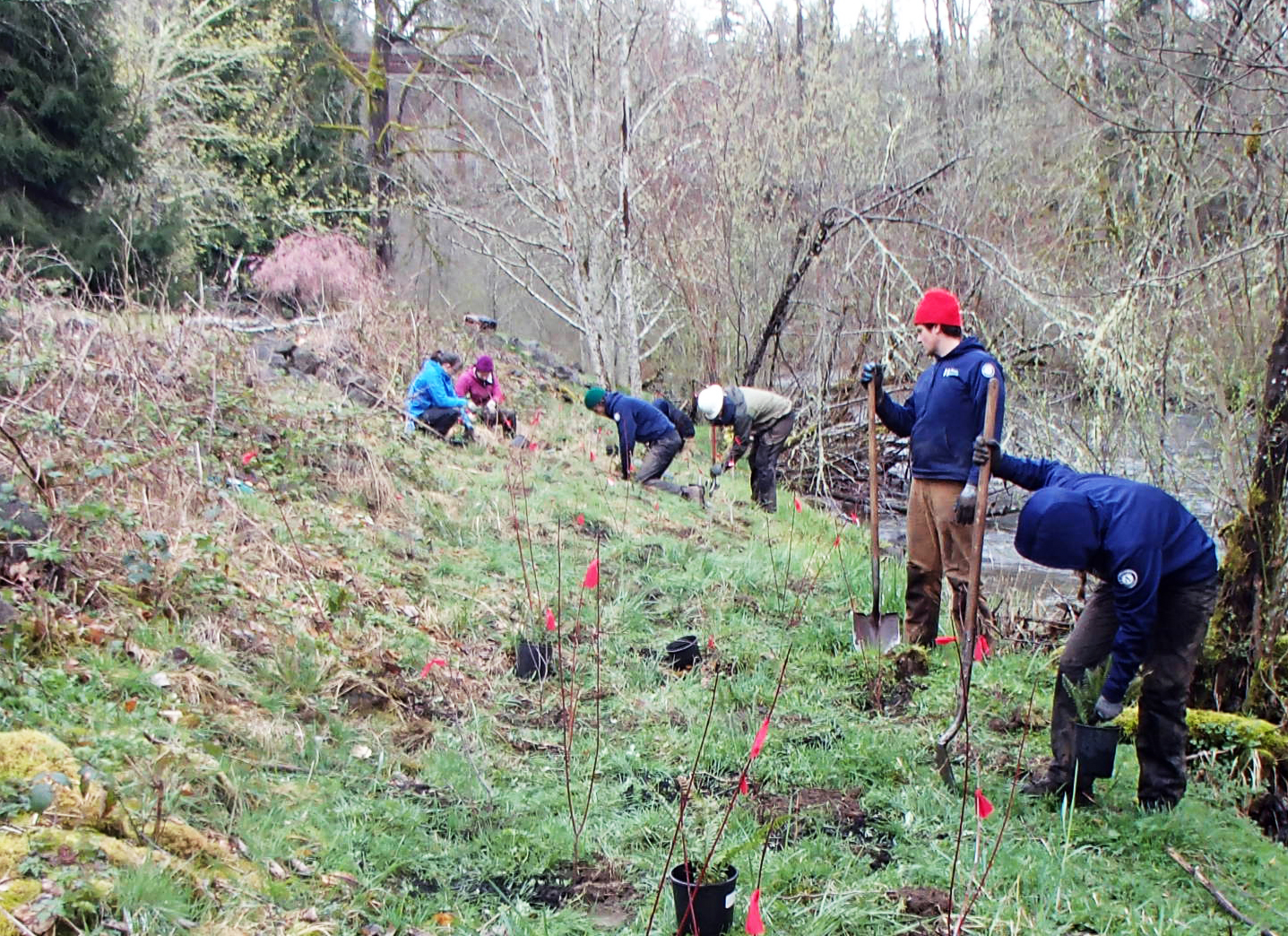Stewardship in action: removing invasive knotweed one property at a time
Invasive knotweed is an aggressive invader of riparian habitats throughout Western Washington. The plant displaces native vegetation and destabilizes riverbanks, disrupting natural habitat processes important to salmon species that depend on healthy riparian areas for shade and food. In 2007, the King County Noxious Weed Control Program started to address the invasion of knotweed in the lower Cedar River, an important salmon river. From this initial work evolved the Cedar River Stewardship in Action partnership, a collaborative, community-driven approach to removing knotweed throughout the watershed and replanting native vegetation. The partnership includes King County, Forterra, Seattle Public Utilities, Friends of the Cedar River and many private property owners who sign up to cooperate in removal and replanting efforts. The partnership has reduced the amount of knotweed by 80 percent and installed native plants to help bring the riverbanks back to their natural state. The Partnership process includes initial surveys, treatment, retreatment, plantings, and follow-up surveys (sometimes years after full removal) to ensure infestations are truly eradicated. The Partnership collaborates closely with property owners and involves volunteers in replanting. In 2013 alone, the partnership worked along 19 river miles, worked with 268 landowners and over 900 volunteers, treated 48 acres of infected areas, and planted 20,000 trees. The restoration model has been replicated in four other watersheds in the Puget Sound region.
What worked:
- Reducing knotweed by 80% and planting native vegetation shades the water and keeps it cool for salmon.
- Planting native plants provides more insects as food for salmon.
- Engaging hundreds of landowners and volunteers supports collaboration and private stewardship.
- Involving multiple collaborators makes the program more efficient and reduces costs for individual organizations.
Benefits:
- Natural riparian habitat is good for salmon and the insects that salmon eat.
- Property values are maintained.
Location:
- Congressional District: 8
- Legislative District: 5, 11, 30, 31, 33, 37, 41, 47
- WRIA: 8
- County: King
Partners:
- Seattle Public Utilities (City of Seattle)
- King County Noxious Weed Control Program
- Forterra
- Friends of the Cedar River Watershed
- Cedar River Stewardship in Action
Project Funding:
- U.S. Environmental Protection Agency
- Seattle Public Utilities
- King County
- National Fish and Wildlife Foundation

